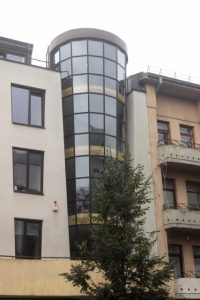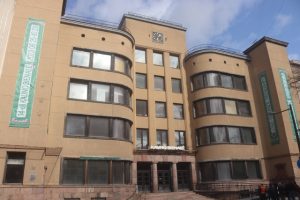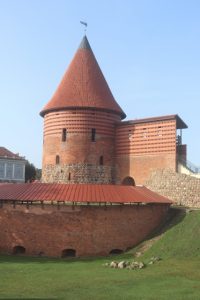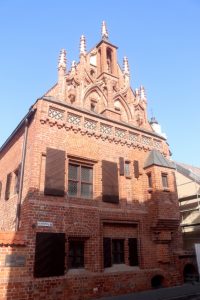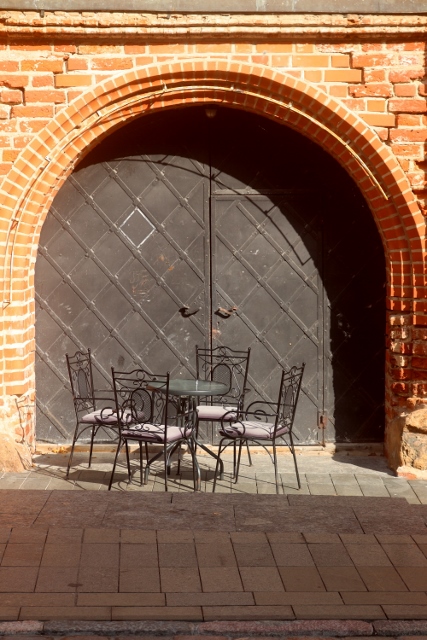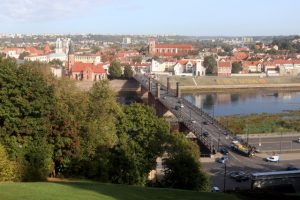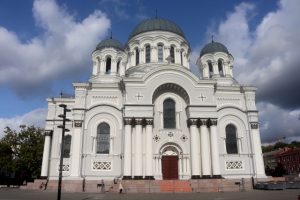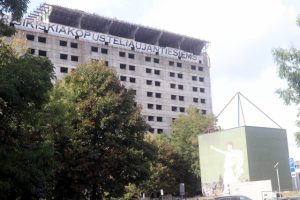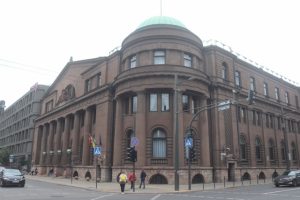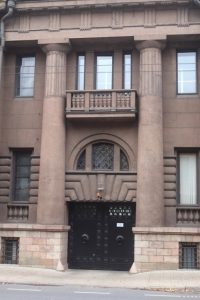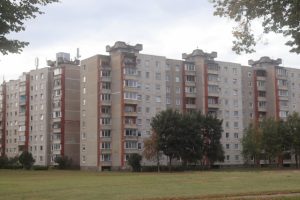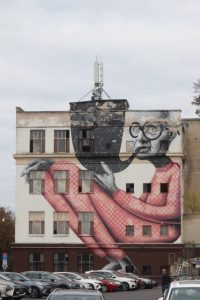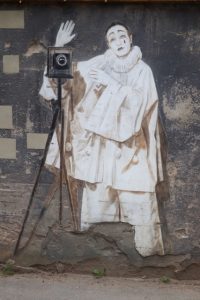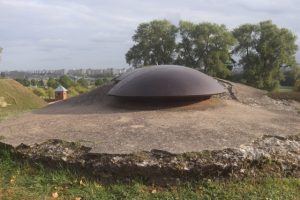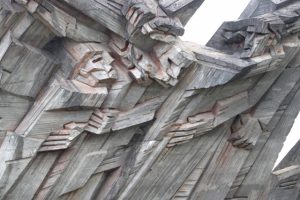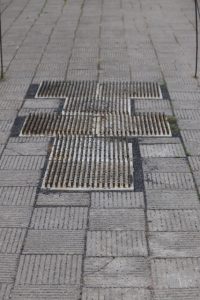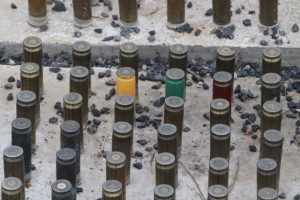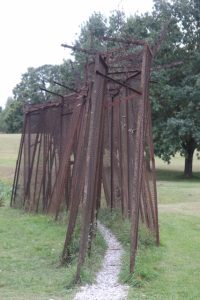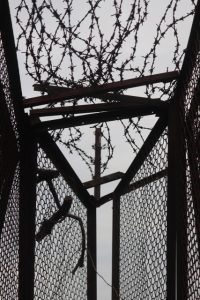The young host of our B&B was very enthusiastic about Kaunas, and convinced us not only to have a look at the Old Town, what all the tourists do, but also concentrate on the Art Deco buildings, which sprang up in the newer part of the town from the 1920s onwards. Although Lithuania gained its independence from Russia in 1918, its capital Vilnius, was soon afterwards occupied by the Poles, in fact all the way to WWII. Kaunas then served as the interim capital, which led to a construction boom to bring the city up to the standards of a European capital city. By this time Art Nouveau had been replaced by Art Deco, or Modernist architecture, and indeed we found many examples of very stylish facades of functional buildings, like the post office, and apartment buildings. But perhaps we are suffering from an architecture overkill, or was it the weather that didn’t help? As a contrast with Art Nouveau it was a very illustrative exercise, compare this with the rather over-decorated extreme of Riga. But all in all it did not impress us as much as earlier. We also had the feeling that the buildings were often less well maintained, quite a few looked in relatively poor state – which is surprising, because Kaunas, like Kuldiga, also achieved UNESCO World Heritage status this year.
Of course, there is much more than Art Deco to Kaunas. The Kaunas castle was first built at the end of the 13th century, and has since been restored, perhaps over-restored, significantly. The gothic House of Perkunas, named after the God of Thunder, stems from the 17th century, and lots of other buildings in the Old Town have a medieval origin. Unlike Lutheran Estonia and Latvia, Lithuania is Catholic, and has lots of more elaborately decorated churches. But again, having seen so many Old Towns already, this one was, perhaps, a little less impressive. Nice enough, though, don’t get me wrong. And Kaunas has the Vytautas the Great bridge connecting the two sides of the Nemunas river; in the 19th century this was called the longest bridge in the world, because on one side the Julian calendar was in force, whilst on the other bank the Georgian calendar rules, a difference of 15 days!
Some of my favourites in architecture are more recent, of course. You know my obsession with palatis, and the outskirts of Kaunas do not disappoint, in the form of an endless array of 9-10 floor Soviet era apartment buildings, balconies closed off in a variety of ways. More unique is the Britanika Hotel, a project started in the 1980s, but never finished because it got interrupted by Lithuania’s independence. So many years later it has still not been completed, never will, but neither will it be demolished: it now has become a symbol of Soviet incompetence. Reminiscent of Monrovia, earlier this year. Oh, and there are more concrete remnants of Soviet construction, rather brutal type of architecture, which I don’t dislike.

not all of the town is equally well maintained, but this is also a nice balcony, look at the flowerpots on the railing, and the stucco decorations on the wall
Another theme during our walk in Kaunas was street art, once again following our enthusiastic host’s recommendations. We even had a map, indicating the most important graffiti paintings and sculptures – although the map wasn’t very accurate (or perhaps we weren’t); many of the works we failed to locate. The once we did find were, let’s say, of variable interest. A few large wall paintings did impress, and some sculptures, even though much smaller than the map suggested, were also of artistic quality. The most interesting collection was in the Yard Gallery, where a group of local artists and residents have turned a derelict courtyard in an attractive location, with various art initiatives decorating the walls. You don’t know where to look, really, each and every side has something of interest. In fact, art was being made whilst we were looking on! More here.
Next to the extravagant decoration of the Yard are also more introspect images, of a boy, an old man, three women. Photos, too, of Jewish people who lived here before the war, before they were taken away. Kaunas’s concentration camps were at some of the old forts that surrounded the town, and one of those, the Ninth’s Fort, has been turned into a memorial site. The fort itself was closed, as all museums are closed on Mondays, but just walking around the site, to what the Lithuanians refer to as the Mass Murder place, seeing the impressive memorial, and reading some of the remembrance stones installed, is quite moving. For instance from the city of Munich, which “in sorrow and shame – and appalled by the silence of the bystanders –“ commemorates the Jews that were deported to Kaunas in 1941 “and brutally murdered at this site”. A number of poignant, not to be misunderstood, art works have been placed in the park surrounding the memorial, which makes the experience at once more dramatic and more accessible. Another part of Lithuanian history.
Next: Vilnius.

